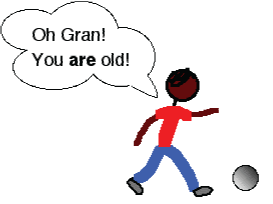Copyright © University of Cambridge. All rights reserved.
'Gran, How Old Are You?' printed from https://nrich.maths.org/
Show menu
Why do this problem?
This problem involves unknowns, and encourages algebraic thinking, but does not rely on using letters to represent the unknowns. Instead, it encourages multiple approaches, so learners might use trial and improvement, for example. It is an ideal opportunity to reinforce the idea that there isn't just one way to solve a problem, although some methods might end up being more efficient than others (for most people). This challenge also consolidates understanding of multiplication and division being inverses of each other, and it might offer a chance to discuss divisibility rules.Possible approach
Introduce the problem to the class as it stands, perhaps orally, or by projecting the page onto the whiteboard. Give everyone time to think about how they might approach it in pairs or small groups, being very careful not to say anything else at all. This may feel very uncomfortable for some children (and for you!) but try not to help them at this stage.
After a suitable length of time, bring everyone together and invite comments on how the problem might be tackled. Once again, try not to advocate one method but once several ways have been discussed, explain that you will give more time for working on the solution now. Each group can choose how they go about the problem so they could use a method that someone else has suggested.
After more time, you could bring the whole class together again to talk about progress so far. Then allow a period of time for further work on the solution and perhaps also for each pair/group to summarise their method/s on a poster, including reflection on how well their method/s worked.
The last part of the lesson could be used for groups to look at each other's posters and compare solutions. This could lead into a discussion about the advantages and disadvantages of each method.
Key questions
What information do you know?
How could you use this to try and find a solution?
What could you try first?
How old do you think Charlie's mother could be?
How old do you think Charlie could be?
